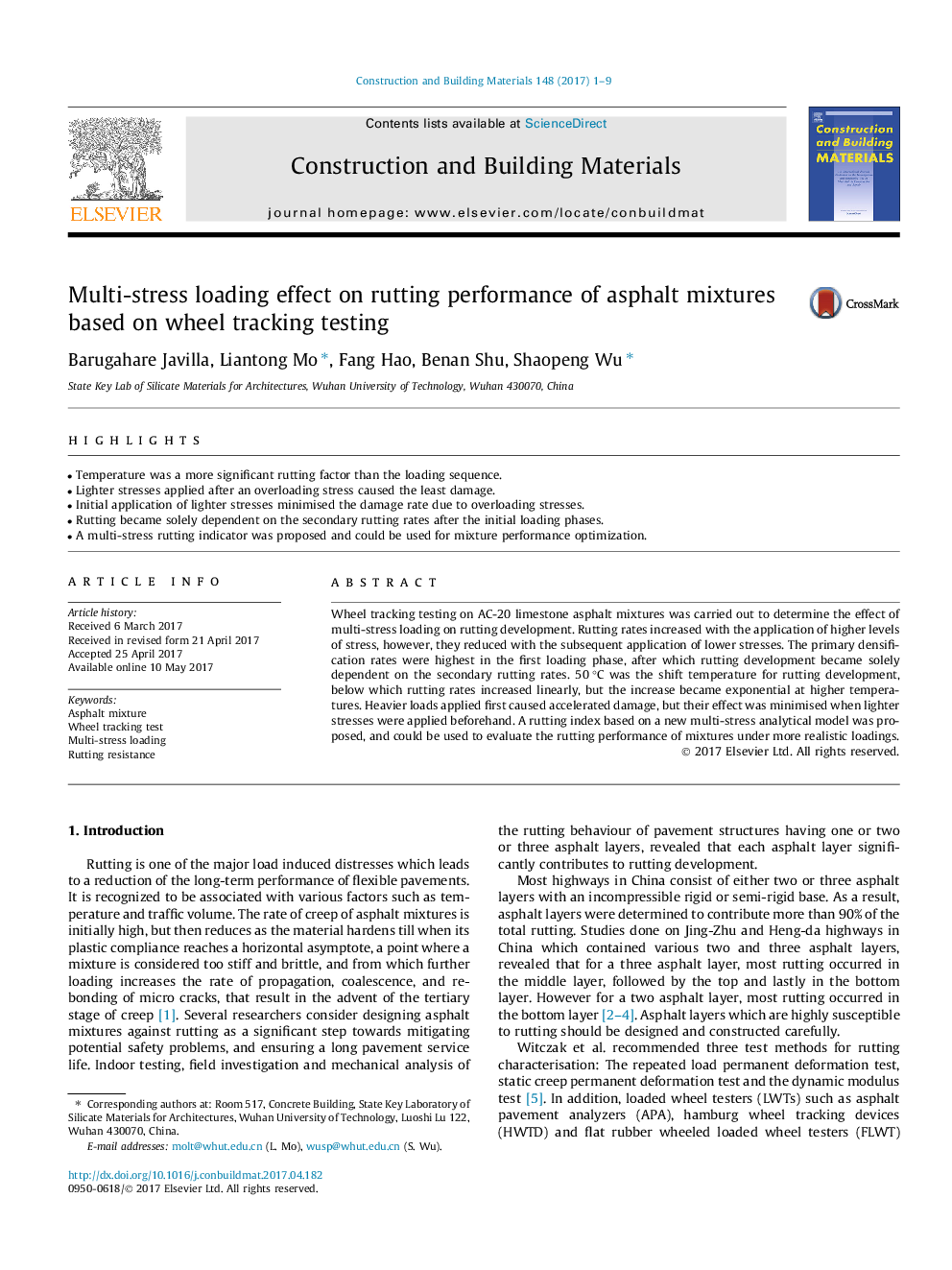| Article ID | Journal | Published Year | Pages | File Type |
|---|---|---|---|---|
| 6480271 | Construction and Building Materials | 2017 | 9 Pages |
â¢Temperature was a more significant rutting factor than the loading sequence.â¢Lighter stresses applied after an overloading stress caused the least damage.â¢Initial application of lighter stresses minimised the damage rate due to overloading stresses.â¢Rutting became solely dependent on the secondary rutting rates after the initial loading phases.â¢A multi-stress rutting indicator was proposed and could be used for mixture performance optimization.
Wheel tracking testing on AC-20 limestone asphalt mixtures was carried out to determine the effect of multi-stress loading on rutting development. Rutting rates increased with the application of higher levels of stress, however, they reduced with the subsequent application of lower stresses. The primary densification rates were highest in the first loading phase, after which rutting development became solely dependent on the secondary rutting rates. 50 °C was the shift temperature for rutting development, below which rutting rates increased linearly, but the increase became exponential at higher temperatures. Heavier loads applied first caused accelerated damage, but their effect was minimised when lighter stresses were applied beforehand. A rutting index based on a new multi-stress analytical model was proposed, and could be used to evaluate the rutting performance of mixtures under more realistic loadings.
